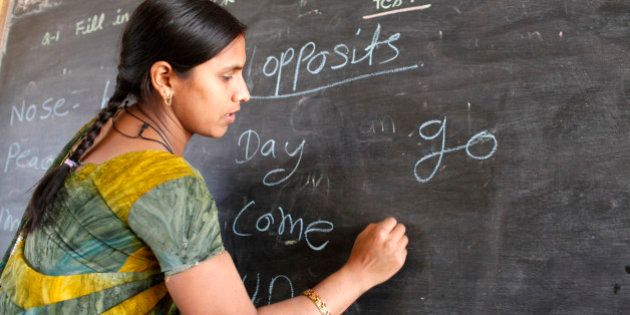
The gender of teachers in schools can influence the success of the "Education for All" movement, particularly in the context of girls' education in developing countries. That's what a recent report compiled by UNESCO's Education for All Global Monitoring Report (EFAGMR) says. The report, titled "Gender and EFA 2000-2015: Achievements and Challenges", released jointly by the GMR and the United Nations Girls' Education Initiative, states that recruiting female teachers has a positive effect on girls' schooling. As educating and empowering girls are essential for creating an egalitarian society, the findings of the report assume great significance.
"In countries where girls experience significant difficulty participating in education due to cultural and social barriers, increasing the presence of female teachers has been shown to have a positive effect on girls' schooling. The presence of women teachers can allay parents' concerns over safety and help increase demand for girls' schooling," the report states.
A greater number of female teachers in a particular area resulted in improving the quality of various parameters in girls' education, including access and retention.
The report underlines a study in 30 developing countries. A greater number of female teachers in a particular area resulted in improving the quality of various parameters in girls' education, including access and retention. The results are more evident in rural areas.
The report highlights the case of Tunisia where the greater number of female teachers in recent years resulted in better performance by girls in schools. Interestingly, the study could not find any link between boys' underachievement or low participation in school and the gender of their teachers.
There is reason for some optimism as changes are taking place in male-dominated countries like Afghanistan and Pakistan where conservative communities do not allow girls to be taught by men. "Two national plans have included clear targets on female teacher recruitment to address low levels of girls' enrolment. These included strategies to increase the number of female primary and secondary teachers by 50% by 2010 and to recruit and train 50,000 grade 12 graduates, of whom 45% were to be women,'' the UNESCO report says. Between 1999 and 2012, the percentage of female primary teachers rocketed from 10% to 31%.
According to the report, a growth in non-formal schooling and private studies has expanded female recruitment. "In low-income countries where women's mobility has traditionally been restricted, this has produced alternative routes for women to become teachers, particularly in rural areas. In Afghanistan, the NGO BRAC has hired mainly married women, recruited locally, and trained them to teach lower primary grades." The trend of employing young, untrained, unmarried women from local communities by private primary schools is gaining momentum in Pakistan. Nepal, too, has adopted policies to recruit more women in schools. The share of female teachers rose from 23% in 1999 to 42% in 2012.
However, there remains much scope of improvement for how women teachers are compensated and how their work is viewed. "The preponderance of female teachers at pre-primary and lower primary levels in both developed and developing countries can be linked to stereotypical notions of gender that view the care of young children as women's work. This translates in most countries to lower pay and less professionalisation and respect... A study in Jordan, where women represent 88% of the workforce in private schools, found that female teachers employed in private schools earned 42% less than their male counterpart," says the report.



Contact HuffPost India
Also see on HuffPost:
